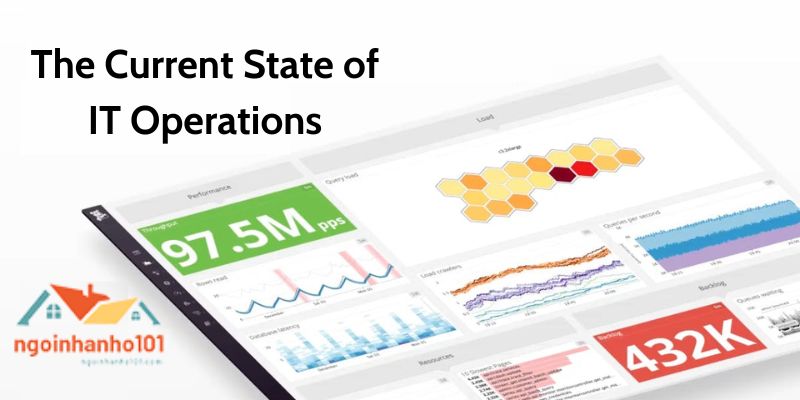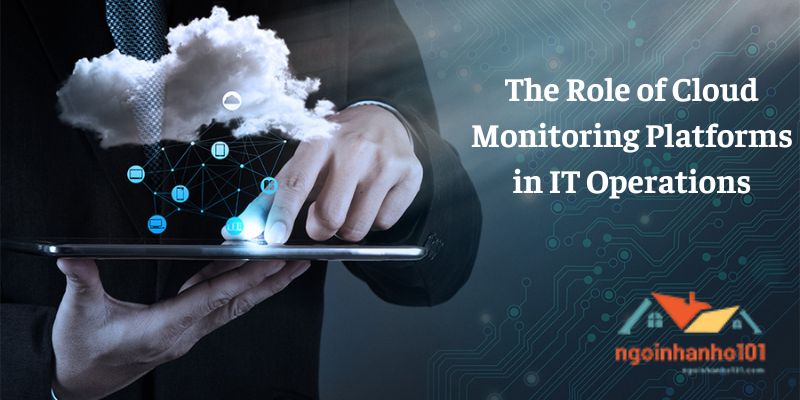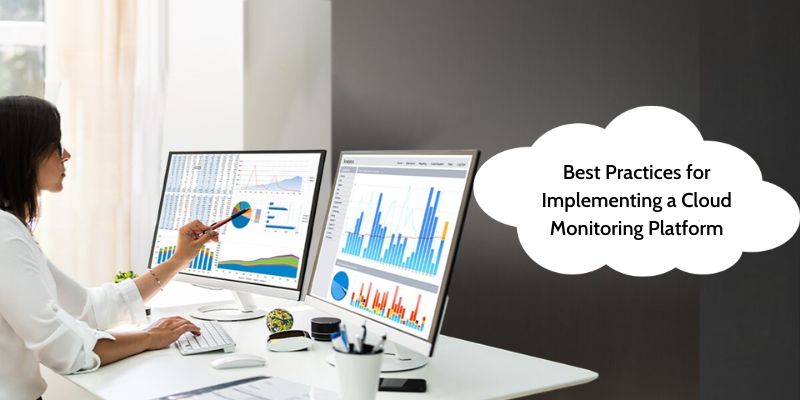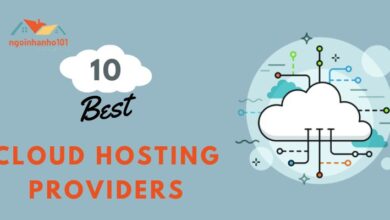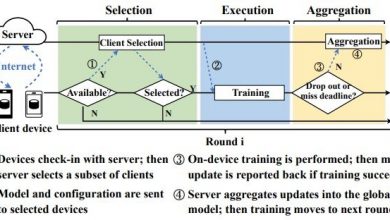Cloud Monitoring Platform: The Future of IT Operations
Any organization that depends on technology to conduct business must succeed in its IT operations. However, given the increasingly complex nature of today’s IT infrastructures, managing IT operations may be difficult and complicated. Platforms for cloud monitoring come into play here. Whether an organization’s IT infrastructure and applications are on-premises, in the cloud, or hybrid, a cloud monitoring platform is a solution that gives visibility and control over them. Ngoinhanho101’s post will go through the value of cloud monitoring systems for IT operations, as well as best practices for their implementation.
Contents
- 1 The Current State of IT Operations
- 2 What is a Cloud Monitoring Platform?
- 3 The Role of Cloud Monitoring Platforms in IT Operations
- 4 Benefits of Using a Cloud Monitoring Platform
- 5 Choosing the Right Cloud Monitoring Platform
- 6 Best Practices for Implementing a Cloud Monitoring Platform
- 7 The Future of IT Operations with Cloud Monitoring Platforms
- 8 Conclusion
The Current State of IT Operations
Traditional IT operations were designed around a siloed model, with separate teams in charge of various facets of IT, including server administration, network operations, and application support. Due to the lack of visibility and control this strategy caused over the overall IT system, it was challenging to immediately identify and address problems.
The rise of cloud computing has brought significant changes to IT operations, with more organizations moving their infrastructure and applications to the cloud. While cloud computing offers many benefits, it also introduces new challenges for IT operations. Managing a hybrid environment that includes on-premises infrastructure, multiple cloud providers, and various SaaS applications can be a daunting task.
What is a Cloud Monitoring Platform?
A cloud monitoring platform is a tool that provides visibility and control over an organization’s IT infrastructure and applications, whether they are on-premises, in the cloud, or hybrid. It aggregates data from multiple sources, such as servers, networks, and applications, and provides real-time insights into the performance and health of the IT environment.
Key features of a cloud monitoring platform include:
- Monitoring: The ability to monitor all aspects of the IT environment, including infrastructure, applications, and services.
- Alerting: The ability to set up alerts for critical events or conditions that require attention.
- Analytics: The ability to analyze data and identify patterns or trends that could indicate potential issues.
- Reporting: The ability to generate reports that provide insights into the performance and health of the IT environment.
The Role of Cloud Monitoring Platforms in IT Operations
By offering the visibility and control necessary for managing complex IT environments, cloud monitoring services play a significant role in IT operations. They make it possible for IT teams to proactively monitor their apps and infrastructure, find problems early, fix them promptly, and boost performance to provide the greatest user experience.
Benefits of Using a Cloud Monitoring Platform
There are many benefits to using a cloud monitoring platform in IT operations. These include:
Improved Operational Efficiency: Cloud monitoring tools assist IT professionals to swiftly identify and address issues, limiting downtime and the effect on business operations, by supplying real-time visibility into the IT environment. Additionally, they make it possible for IT teams to maximize capacity and performance, assuring effective resource management.
Enhanced Visibility and Control: It is simpler to see problems and comprehend their effects on the organization thanks to cloud monitoring tools, which offer a single window into the whole IT infrastructure. The performance of their infrastructure and applications may be better understood by IT teams thanks to these tools, which can aid in capacity planning and resource allocation.
Proactive Issue Detection and Resolution: IT teams can use cloud monitoring solutions to set up alerts for urgent situations like high CPU consumption, insufficient storage space, or network latency. This makes it possible for IT teams to proactively find and fix problems before they have an impact on the company.
Cost Savings: Cloud monitoring tools can assist enterprises in making financial savings on IT infrastructure and services by improving resource consumption and capacity planning. Additionally, they help IT workers avoid expensive downtime and use less time and resources while troubleshooting problems.
Improved Customer Experience: Cloud monitoring tools can help enterprises deliver a better user experience to their consumers by proactively monitoring and optimizing performance. Increased client happiness and loyalty, which are essential for any company’s success, can result from this.
Choosing the Right Cloud Monitoring Platform
When choosing a cloud monitoring platform, there are several factors to consider. These include:
- Scalability: The ability to scale the platform as the organization’s IT environment grows and changes.
- Integration: The ability to integrate with existing tools and systems, such as service desk software or ITSM platforms.
- Security: The ability to provide secure access to sensitive data and ensure that data is protected against unauthorized access.
- Cost: The cost of the platform, including licensing, implementation, and ongoing maintenance and support.
There are many cloud monitoring platform vendors in the market, each with their strengths and weaknesses. Some of the top vendors include:
- Datadog
- Splunk
- New Relic
- SolarWinds
- Nagios
Comparing different cloud monitoring platforms can help organizations choose the right platform for their needs.
Best Practices for Implementing a Cloud Monitoring Platform
Implementing a cloud monitoring platform requires careful planning and execution. Some best practices to consider include:
- Defining the scope and goals of the implementation: This includes identifying the IT environment to be monitored, the metrics to be tracked, and the stakeholders involved in the implementation.
- Establishing a monitoring strategy and selecting the right metrics: This includes identifying the key performance indicators (KPIs) that are most relevant to the organization’s business goals and objectives.
- Integrating the cloud monitoring platform with existing tools and systems: This ensures that the platform works seamlessly with other IT tools and systems, such as ITSM platforms, service desk software, and incident management tools.
- Implementing automation and proactive alerting: This includes setting up automated processes for routine tasks, such as patch management and backups, and configuring alerts for critical events or conditions that require attention.
- Establishing a feedback loop for continuous improvement: This involves using data and insights from the cloud monitoring platform to identify areas for improvement and make changes to the IT environment as needed.
The Future of IT Operations with Cloud Monitoring Platforms
Cloud monitoring platforms appear to be the way of the future for IT operations. The demand for real-time visibility and control will only increase as IT infrastructures get more complicated. To fulfill the demands of businesses, cloud monitoring platforms will keep developing, adding AI and ML to offer predicative insights and enable self-healing systems.
Conclusion
The future of IT operations lies in cloud monitoring systems, which give complex IT environments the visibility and control they require. Numerous advantages are provided by them, such as increased operational effectiveness, better visibility and control, proactive issue identification and resolution, cost savings, and enhanced client experiences. Organizations can make sure they get the most out of their investment by adhering to best practices when adopting a cloud monitoring platform. Cloud monitoring platforms will become more and more crucial to the performance of businesses across all sizes and sectors as the IT landscape continues to change.
Conclusion: So above is the Cloud Monitoring Platform: The Future of IT Operations article. Hopefully with this article you can help you in life, always follow and read our good articles on the website: Ngoinhanho101.com

